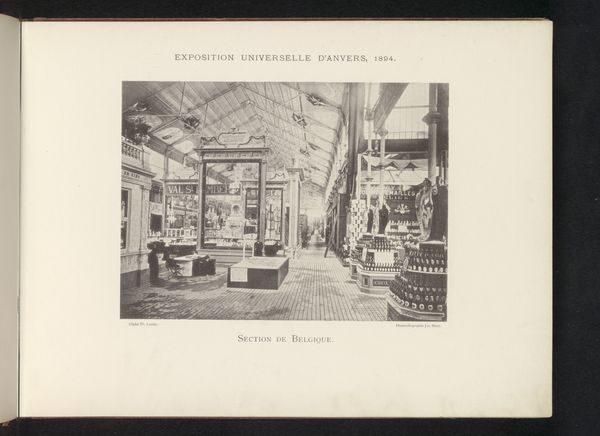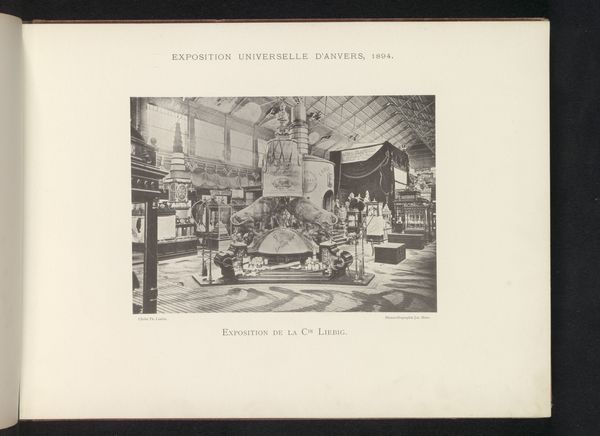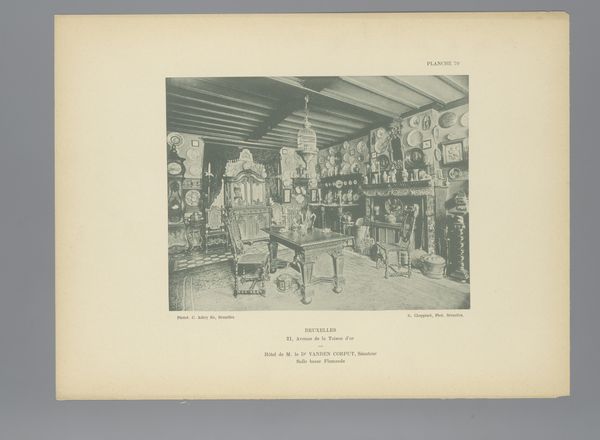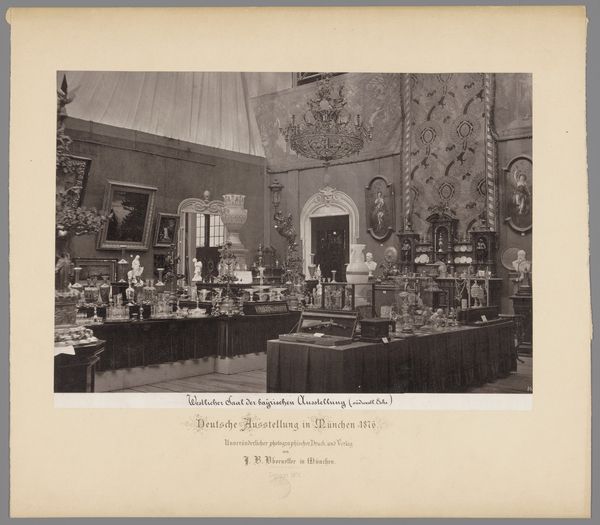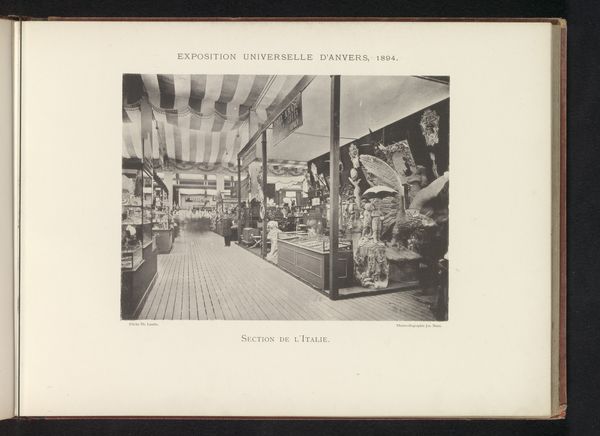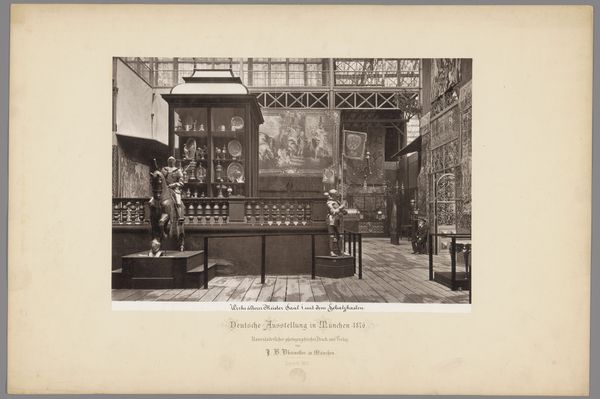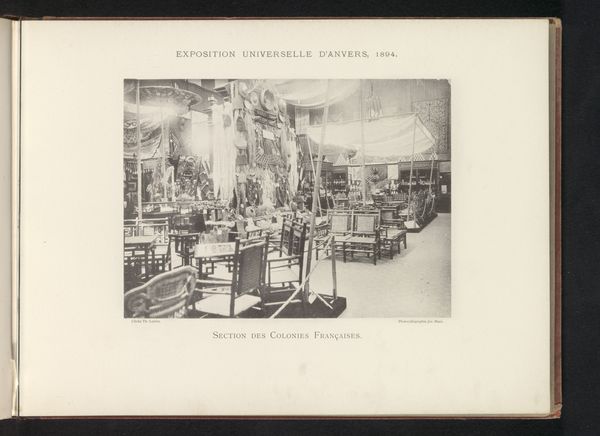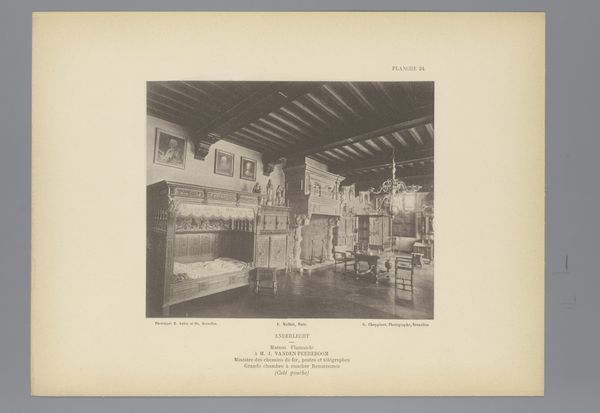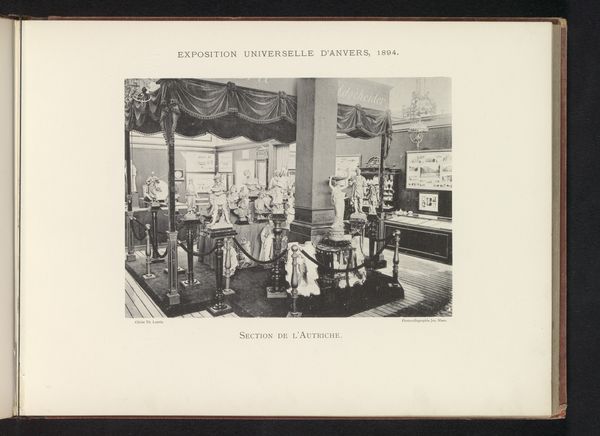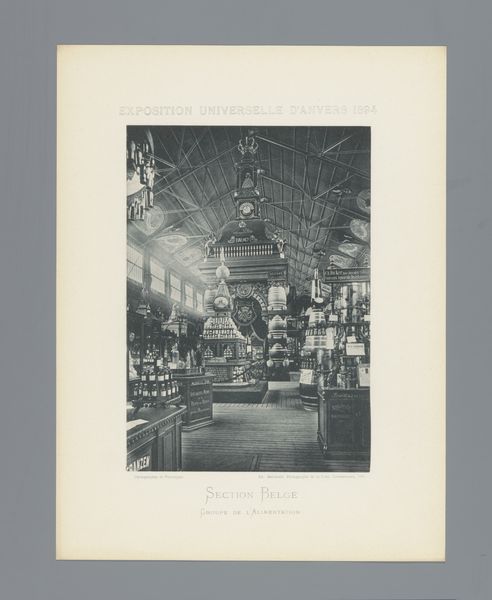
print, photography
# print
#
landscape
#
photography
#
history-painting
#
academic-art
Dimensions: height 161 mm, width 218 mm
Copyright: Rijks Museum: Open Domain
Curator: Right, so we are looking at a photograph entitled "Expositie van Duitse objecten tijdens de wereldtentoonstelling te Antwerpen," which translates to "Exhibition of German objects during the World Exhibition in Antwerp." It’s dated 1894 and attributed to Th. Lantin. What are your first thoughts? Editor: Wow, it’s... dense! Almost oppressively ornate. So much wood and carving. It feels very "old world power" – all that heavy detail suggesting wealth and industry. Makes me feel a little claustrophobic, even though it's a large space. Curator: That’s a very perceptive initial reading. We must understand world exhibitions, or world's fairs, were critical tools for nation-building and displays of colonial power. They functioned as sites for constructing national identities but also for disseminating ideas of racial and cultural hierarchies. Notice the German section of the exhibition. How does this representation project an image of German superiority, both materially and culturally? Editor: Right, okay, now I see it. Each vitrine and display looks like it is screaming, "Look at what we can do!" This isn’t just craftsmanship; it is a curated demonstration of industrial and artistic capability, packaged to intimidate and impress. I’m also struck by the people who seem like ants in this oversized showroom—insignificant against the manufactured prowess on display. Curator: Precisely. And think about Antwerp itself. Why Antwerp? Belgium, as a colonial power in the late 19th century, provides a strategic backdrop. Exhibiting German industrial prowess in a colonial hub underscores the ambitions of German global power on the rise, particularly its imperial reach. The photographic medium itself participates. Its documentary aesthetic enhances the perceived authority of the claims of technological and material advancements on display. Editor: So, what seemed at first like just over-the-top design turns out to be carefully calculated propaganda, visualized through architecture and industrial design, then amplified through photography. I feel tricked by what my initial impression of design was, almost complicit. Curator: I wouldn’t say tricked. That emotional response, that sense of unease you felt, is part of the experience—a reaction to the carefully constructed message being communicated through design, power and exhibitionary culture. We feel the weight of it. Editor: Well, now I know what I will be thinking about on my next antique store visit! Suddenly a lot of cluttered rooms will reveal latent global and social relationships that are much bigger than an armoire. Curator: Indeed, this photograph pushes us to reconsider objects as bearers of broader historical, cultural, and political significance that have contemporary reverberations.
Comments
No comments
Be the first to comment and join the conversation on the ultimate creative platform.
